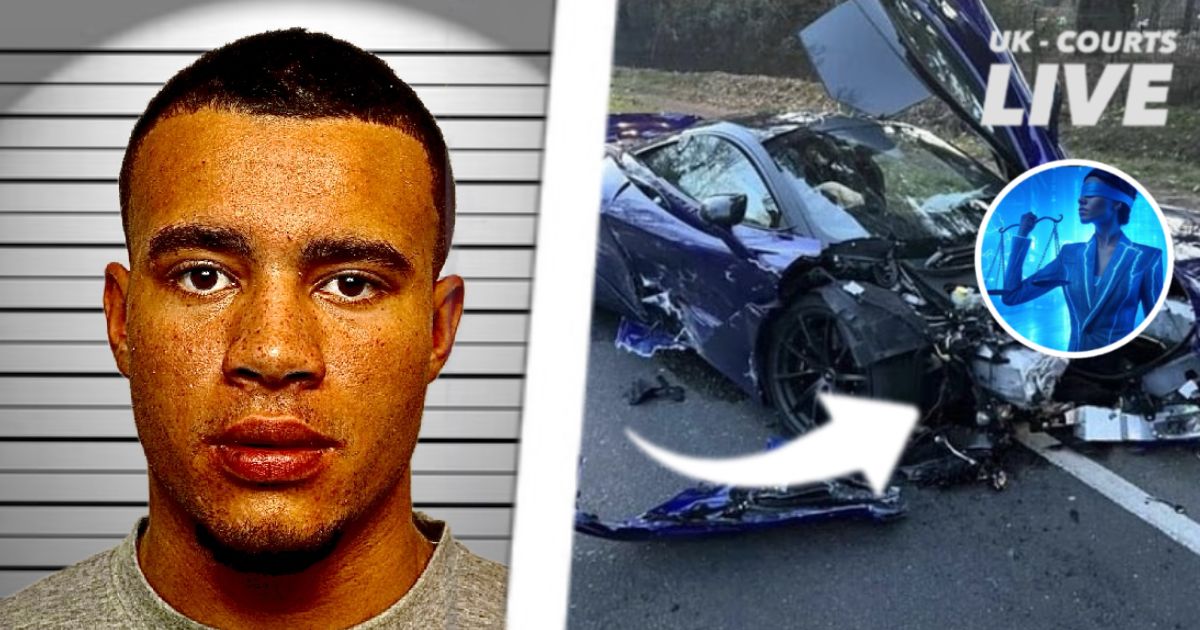🔴 HS TickyTocky Court Shock: Sentencing Confusion Deepens
TikTok star HSTikkyTokky’s case takes a baffling twist as confusion surrounds missing charges and his unexpected remand ahead of sentencing for driving offences.
Harrison “HS TickyTocky” Sullivan, the 22-year-old social media personality whose rise to notoriety has been matched only by his string of brushes with the law, has once again found himself before the courts — this time at Staines Magistrates’ Court, where he has pleaded guilty to dangerous driving and driving without insurance.
The case stems from a serious road traffic collision last year, after which Sullivan not only fled the scene but subsequently fled the United Kingdom entirely, remaining at large for nearly twelve months before eventually being detained and brought back into custody. Despite that, current court reports list only the two driving offences — dangerous driving and no insurance — as the formal charges before the court.
That has left many court watchers, and indeed those familiar with criminal procedure, questioning how a case of such magnitude, and with such a public profile, could apparently have been reduced to offences that would normally attract fines, community orders, or short-term disqualifications rather than imprisonment. Yet, in a development that raises eyebrows across the legal community, Sullivan was remanded in custody following his guilty pleas — a decision that almost certainly points to an expectation of a custodial sentence when he next appears for sentencing.
Ordinarily, a defendant charged only with dangerous driving and no insurance would be granted unconditional bail or, at most, a suspended term pending pre-sentence reports. The fact that Sullivan remains detained suggests there may be aggravating factors — or unreported offences — that have influenced the court’s decision. The prosecution and the CPS have so far provided no clarification on whether further counts, such as failing to stop, failing to report an accident, or failing to surrender to custody, remain under consideration.
This lack of transparency has generated significant legal curiosity. If these additional offences have indeed been dropped or consolidated for expediency, it could send an unfortunate message — particularly in a case involving a high-profile social media figure who spent the past year openly mocking British law enforcement online while evading arrest. The principle of equality before the law dictates that defendants should not receive leniency simply because a plea to lesser offences provides procedural convenience.
Equally, the decision to remand him may indicate judicial awareness of the wider context: a defendant who has previously absconded, demonstrated disregard for the court process, and whose notoriety risks undermining public confidence in the administration of justice. In such circumstances, remand pending sentence may not merely be a punitive step, but a precautionary one — a means of ensuring his presence at the next hearing and signalling judicial disapproval of his conduct since the offence.
Sullivan’s case highlights a tension within the modern justice system between efficiency and public accountability. Streamlining prosecutions by limiting charges can expedite court throughput, but where a case has significant public visibility, that approach risks eroding confidence in fair and proportionate justice. The CPS South East division has been approached for clarification as to whether other related offences were considered or remain under review.
What is certain is that the outcome of Sullivan’s sentencing hearing will now be viewed as a barometer of how seriously the courts treat offenders who exploit social media notoriety to evade responsibility. Should the court impose only a nominal sentence for these two offences, it would inevitably raise concerns about consistency and deterrence. Conversely, a custodial outcome would reaffirm the principle that flight from justice — and public contempt for the judicial process — carries consequences far beyond the initial crime.
This case, then, is not merely about a reckless act behind the wheel, but about the credibility of a justice system confronted with a new class of defendant — the digitally famous fugitive. Whether the courts choose to make an example of Sullivan, or to quietly conclude proceedings without further escalation, will speak volumes about the balance now being struck between pragmatism and principle within English criminal justice.




